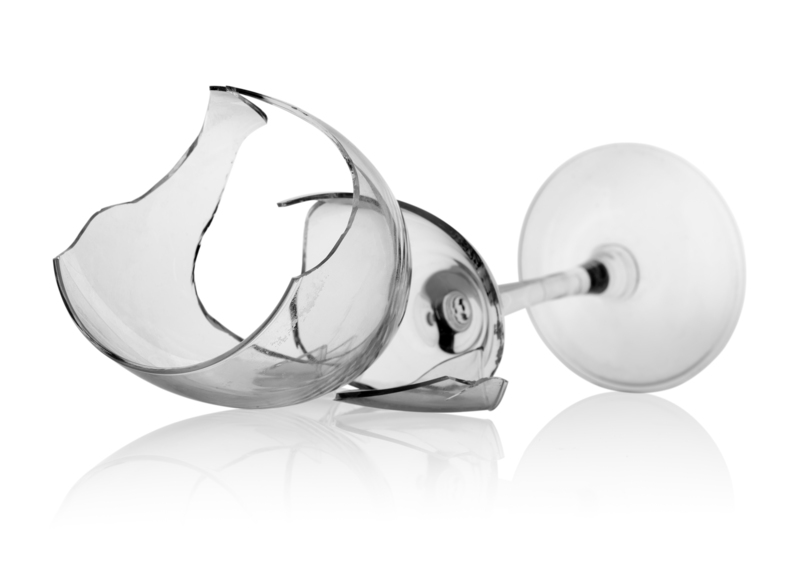How to Efficiently Move Your Bed and Mattress
Posted on 12/06/2025
How to Efficiently Move Your Bed and Mattress
Moving to a new home is both an exciting and overwhelming experience. Among all the household items that need to be relocated, the bed and mattress pose unique challenges. Their bulk, weight, and size can make the process daunting. If you've ever wondered how to efficiently move your bed and mattress without causing damage or unnecessary stress, you've come to the right place. This comprehensive guide offers step-by-step tips for moving your mattress and bed frame with ease, while keeping them clean, intact, and ready for restful nights in your new space.
Why Is Moving a Bed and Mattress So Challenging?
Understanding why it can be difficult to move your bed and mattress efficiently helps you prepare for success. Beds are usually one of the largest pieces in a home, often comprising a bulky mattress, box spring, and a sometimes intricate frame. Mishandling them can not only result in damage to the furniture but also injuries or accidental marring of your home's walls and floors. Mattresses can be especially tricky to maneuver through tight doorways and staircases, and can also accumulate dirt or tears if not properly protected.
Common Problems Encountered
- Mattresses are heavy, floppy, and don't have handles
- Bed frames often don't fit through doorways unless disassembled
- Risk of dirt, stains, or rips without protective coverings
- Difficulty in maneuvering through stairs and elevators
- Potential for hardware loss or improper reassembly

Planning: The Key to Efficient Bed and Mattress Moving
With the right preparations, moving your bed and mattress efficiently is more than possible. Here's how to get organized before you dive into the heavy lifting:
Measure Everything First
- Measure the bed and mattress: Know the exact dimensions--length, width, and height.
- Check your moving route: Measure doorways, hallways, stairs, and elevators in both your current home and your new place to ensure everything fits.
- Plan your path: Remove obstacles along the way for a clear path from bedroom to moving vehicle.
Gather the Right Supplies
To efficiently move a mattress and bed frame, you'll need proper tools and packing materials:
- Mattress bag: Essential for protecting from dirt, moisture, and tears.
- Moving blankets: Great for padding sharp bed frame edges and protecting walls.
- Furniture dolly or hand truck: These tools can make moving heavy or awkward pieces much easier.
- Wrenches, screwdrivers, or a drill: For disassembling the bed frame.
- Packing tape and zip ties: For securing loose parts, bags, and mattress covers.
- Plastic bags or containers: Keep hardware (screws, bolts) organized and labeled.
How to Move Your Bed Frame Step by Step
Properly handling your bed frame is vital to efficiently moving your bed to your next location:
Step 1: Strip the Bed
- Remove all linens, pillows, and bedding.
- Wash and pack them separately to ensure cleanliness.
Step 2: Disassemble the Bed Frame
- Take off the mattress and set it aside.
- Remove the box spring or foundation if you have one.
- Check how the bed frame is assembled. Typically, frames are held together with screws, bolts, or clips.
- Carefully unscrew or unclip parts, keeping each piece together.
- Label each part with masking tape if needed to aid reassembly later.
- Place all screws and bolts in a ziplock bag and tape the bag to the largest piece of the frame.
Step 3: Wrap All Pieces for Protection
- Wrap slats, fasteners, headboard, and footboard in moving blankets or bubble wrap for scratch protection.
- Secure the wrapping with tape, but do not place tape directly on wood or painted areas to prevent damage.
Step 4: Move to the Truck or Van
- Use a dolly for especially heavy pieces.
- Take care not to bang the bed frame against walls or floors.
- Lay components flat or upright against the side panels in your truck--never stack heavy items on top of them.
How to Efficiently Move a Mattress
Moving a mattress is a different beast. To move your mattress efficiently and safely, follow these instructions.
Step 1: Bag the Mattress
- Slip your mattress into a mattress moving bag (available at hardware and moving supply stores). This prevents tears, moisture exposure, and grime.
- Seal the bag with packing tape for extra security, especially at the opening.
- If you don't have a bag, heavy plastic sheeting or a large painter's drop cloth can work as an alternative--just make sure to secure it tightly.
Step 2: Clear the Path
Before you go anywhere, ensure your route is free of tripping hazards, sharp turns, and delicate decor that could get damaged along the way.
Step 3: Carrying the Mattress
- It's best to have a helper--mattresses are awkward and far heavier than they look!
- Each person should grip securely, ideally at each end.
- Lift with your legs, not your back, to avoid strain.
- Take slow, coordinated steps, especially around corners and stairways.
- Avoid folding, which can cause damage--unless your mattress is designed to be foldable (like some foam mattresses).
Step 4: Loading the Mattress
- Sit the mattress upright along the side wall of the truck, not flat with items stacked on top--this prevents warping or permanent indentations.
- Use straps or ropes to secure it in place and minimize shifting during transit.
Special Considerations for Different Types of Beds and Mattresses
There are diverse kinds of beds and mattresses. Here's how to handle some common variations to efficiently move your bed and mattress:
Moving Platform or Storage Beds
- Platform beds often have more parts and require extra steps to disassemble.
- Take photos during each phase of disassembly for easier reassembly.
- Remove any drawers or shelves and pack them separately.
Upholstered or Canopy Beds
- Remove fabric or canopy materials and pack these in protective coverings.
- Wrap upholstered frames in plastic and moving blankets to avoid snags or stains.
Latex, Foam, or Hybrid Mattresses
- These types are often more flexible but can also be heavier. Avoid folding unless manufacturer guidelines indicate it's safe.
- Double-check mattress bag fit; foam mattresses expand more than innersprings.
Pillow-Top or Innerspring Mattresses
- Never bend these, as it can damage the internal coils or structure.
- Always use two (or more) people to handle heavier innerspring beds.
Can You Move Your Bed and Mattress Alone?
It is possible to move a bed and mattress by yourself, but not always recommended--especially with queen-size, king-size, or heavy memory foam mattresses. If you must tackle the move solo:
- Slide the mattress onto a large piece of cardboard to glide it across rooms.
- Use furniture straps or forearm forklifts for better leverage while lifting.
- Ensure there are no stairs, or use a ramp where possible.
- Disassemble the bed into the smallest manageable parts.
- Take frequent breaks to avoid fatigue and injury.
Protecting Your Bed and Mattress During the Move
If you want to efficiently move your mattress and bed frame without costly damage, proper protection is crucial:
- Wrap all bed frame pieces in furniture pads or blankets.
- Securely tape moving blankets--avoid tape on surfaces.
- Double-bag the mattress if moving in bad weather or for a long distance.
- Avoid stacking heavy furniture on top of the mattress inside your moving truck.
- Place your mattress and bed frame in the truck last for easier unloading and to minimize handling in transit.
Tips for Reassembling Your Bed at Your New Home
The last step to efficiently moving your bed is to ensure proper assembly and placement at your new address:
- Clear the bedroom space for assembly before unloading.
- Lay out all bed frame parts and hardware.
- Use the photos or labels made during disassembly as a guide.
- Tighten all screws and bolts firmly, but don't over-torque to avoid stripping threads.
- Place your bed frame first, ensuring it's level and stable before adding the mattress.
- Let the mattress air out for a few hours, especially if it's been covered for a long period.
- Check for any damage, and repair or replace minor parts as needed before full assembly.
How to Avoid Common Moving Mistakes
- Don't rush. Take your time to avoid injuring yourself or damaging your belongings.
- Label everything. Hardware bags, frame components, and parts should be clearly marked for fast reassembly.
- Never force pieces. If a bed frame part doesn't fit, double-check your assembly or the parts list.
- Don't ignore protection. Always use mattress bags and padding for frames--even on short moves.
- Stay organized. Keep all tools and hardware easily accessible during the moving process.
Should You Hire Professional Movers?
If you're moving a luxury, antique, or oversized bed and mattress, or live in a home with tight spaces, hiring professionals might be the best route. They have the tools, experience, and manpower to move beds and mattresses efficiently--often with insurance to cover any unlikely damages.
- Compare quotes and read reviews for specialist furniture movers.
- Ask movers about their experience with bed and mattress moving as some companies offer special services or packing supplies.
- Professional moving companies can also provide disassembly and reassembly services, saving you time and hassle.

FAQ: Efficiently Moving Your Bed and Mattress
Do I need a mattress bag for moving?
Yes. Mattress bags prevent stains, tears, and moisture damage.
Is it safe to stand my mattress upright during a move?
Yes, but only for short periods and if secured. For storage or long-distance moves, consult your mattress manufacturer for recommendations.
Can all beds be disassembled?
Most modern bed frames are simple to take apart, but older or custom beds may require special tools or professional help.
How do I keep track of small hardware?
Use labeled plastic bags, containers, or even small boxes taped to the frame parts.
Conclusion: A Smooth Bed and Mattress Move
Learning how to efficiently move your bed and mattress is essential for a successful and stress-free moving day. With proper planning, the right tools, and some teamwork, you can safeguard your valuable sleep investment during any move. Protecting every part, labeling carefully, and approaching the process step by step ensures that you'll be resting comfortably in your new home before you know it. Whether you undertake the move yourself or hire professionals, following these tips will keep your bed and mattress in pristine condition for many nights of restful sleep ahead.
Good luck and happy moving!



